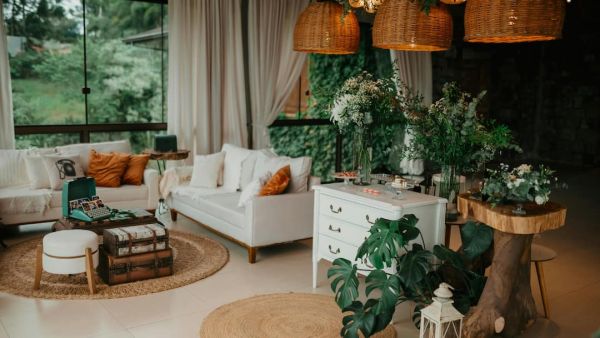
(By Ankit Modi)
Less doesn't equal more – instead, it allows you to create real space for what matters in your life. You don't have to undertake a full renovation to establish a new calming environment in your home; in fact, it is often possible to profoundly change the essence of the space using less extreme changes, as we explored in the introduction.
Clear Surfaces To Cut The Visual Clutter
Let's consider surfaces that are naturally focal points – countertops, tables, open shelving. When we have things on an open, sticking surface that doesn't serve a purpose, the room can feel more cluttered than it is. The intent behind items we place on an open object and horizontal surface is important, and we can help ourselves decide to keep or select it based on two questions: can I use it, and does it bring me joy? When we clear items on a horizontal, open surface, the room feels more spacious and open.
Opt For Soft Neutrals
Neutral colours such as white, beige, grey, or soft pastels work in a calming manner as a backdrop and a better reflective surface in a minimal space aesthetic that works with the visual field and can further lend to indications of visual cohesion in small spaces. A neutral palette does not need to be boring; it offers a cohesive palette that lends itself to blending in visual continuity, with no visual competition.
Buy Hard-Working Furnishings
Think of all of the types of furniture that include multifunctionality as options to consider, beds with storage, nesting tables, benches with hidden compartments, or ottomans that can also organise. These kinds of decisions help you to organise, while allowing for comfort and room, and also add utility to the room while keeping it visually light.
Emphasize One Or Two Noteworthy Décor Items
Instead of using a variety of objects throughout the room on every wall and surface, focus on one distinctive piece of art or a noteworthy sculptural item. Additionally, a single well-placed statement piece will carry a lot more weight than row after row of smaller pieces of art. A statement piece will also give the room a defined focal point and will help you to work toward a composed clarity and signal to you that you are working to create a cohesive aesthetic space.
Allow Light To Lead
Remove any heavy window drapery and replace it with sheer fabric or lightweight options, allowing the rooms to be flooded with textured sunlight. Natural light defines edges, visually expands small rooms, and immediately establishes a cleaner, fresher look. It's one of the better and simpler options for 'stepping up' a room without lifting a tool.
Establish The 'One In, One Out' Practice
When a new item arrives at your home, let an old one go. This practice allows for stewardship of your belongings, maintains strong purposefulness about what you choose to fill your home with, and ultimately leads to a balanced home instead of a heavy one.
Keep Your Materials Consistent And Patterns To A Minimum
Avoid having too many textiles and patterns throughout your spaces. While wood, metal, and glass are a surefire combination to give warmth, contrast, and interest together, this will help prevent sensory overload. When all of your items are using the same language visually, the rest of the home will become calmer and more cohesive.
Ankit Modi is Managing Director at Durakraft Extrusions
Contact to : xlf550402@gmail.com
Copyright © boyuanhulian 2020 - 2023. All Right Reserved.